Surface of tongue
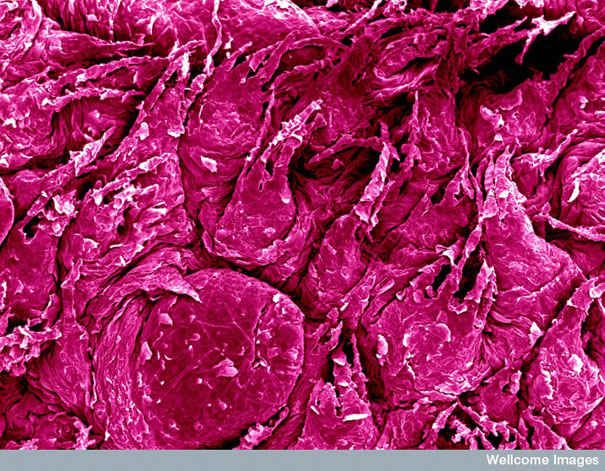
“Scanning electron micrograph of the surface of the tongue, computer-coloured red/pink.”
Sperm developing in the testis
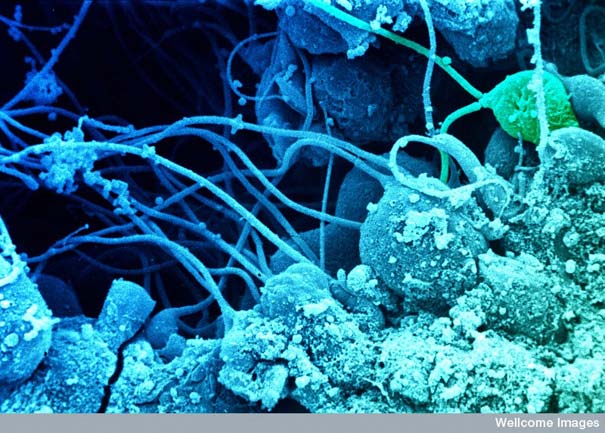
“Sperm develop in the seminiferous tubules of the testis. The
spermatids are embedded in the Sertoli cells with their tails projecting
into the lumen of the tubule. These spermatids are in the advanced
stages of maturation. One of the spermatids has two tails tails (top
right, green).”
Sperm on the surface of a human egg

“Numerous sperm trying to to fertilise a human egg. They are trying
to find their way through the zona pellucida, the membrane that
surrounds and protects the egg.”
Close-up of midge eye
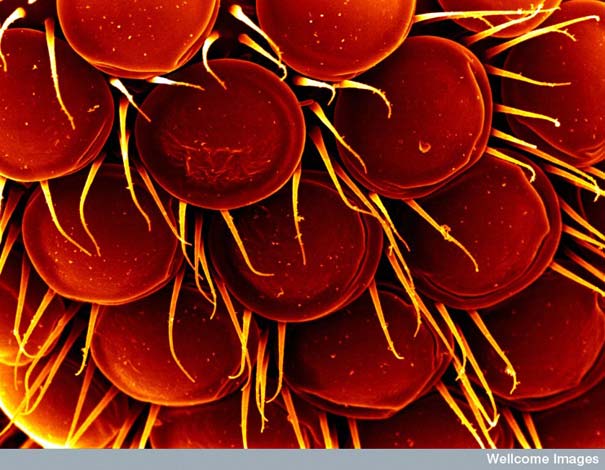
Close-up of part of midge head
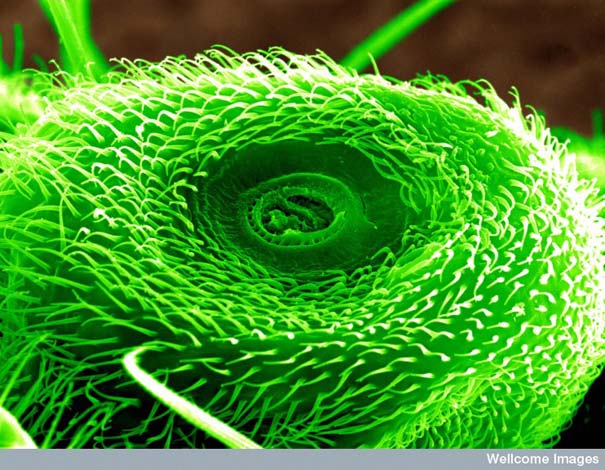
Pubic louse
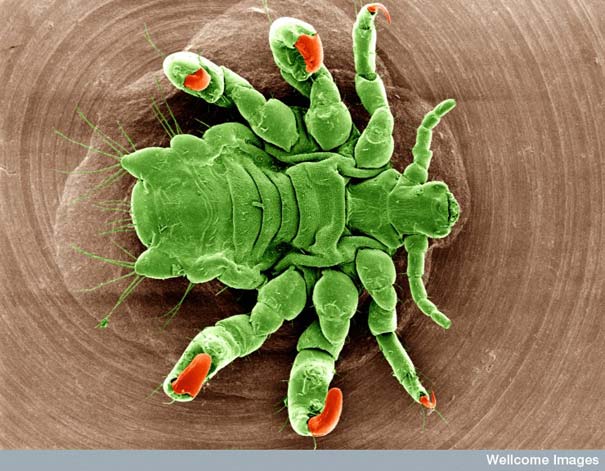
Head of pubic louse
Claws of pubic louse
Stinging hairs on a nettle leaf
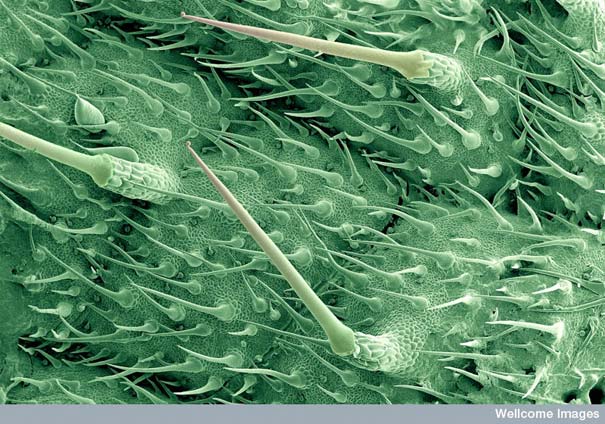
“The large stinging hairs are hollow tubes with walls of silica
making them into tiny glass needles. The bulb at the base of each hair
contains the stinging liquid that includes formic acid, histamine,
acetylcholine and 5- hydroxytryptamine (serotonin). The tips of the
glassy hairs are very easily broken when brushed, leaving a sharp point,
which easily pierces the skin to deliver the sting.”
Comparative thickness of human hair
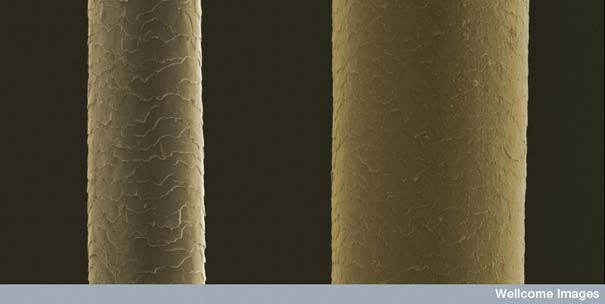
“This image shows the difference in thickness of human hair between
different ethnic groups. The strand of hair on the left is that of a
Caucasian blond female. The hair on the right is from an Asian male.
Hair is normally comprised of three layers, the inner medulla, the
cortex and the cuticle. The cuticle is the outermost layer and is
comprised of numerous overlapping cells or scales. The cortex makes up
the majority of the hair thickness. Interestingly, the inner medulla is
not present in blond hair.”
Tooth

“Low power scanning electron microscope image of tooth surface, computer-coloured yellow on blue background.”
Nanowire
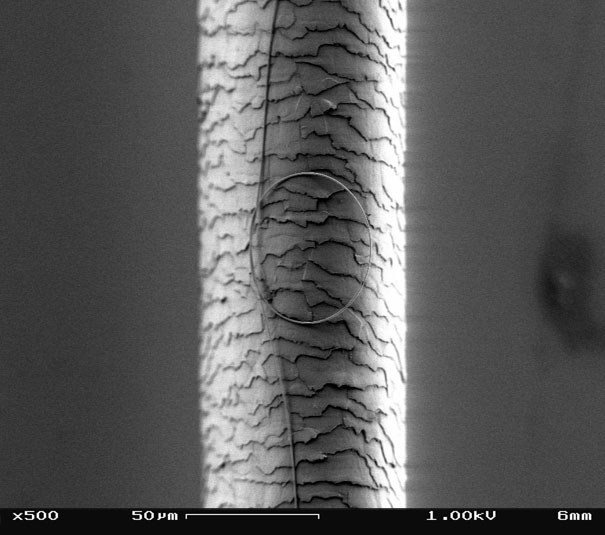
“Micrograph of a nanowire curled into a loop in front of a strand of
human hair. The nanowires can be as slender as 50 nanometers in width,
about one-thousandth the width of a hair.”
The nanowires could be used, in the near future, to link tiny components into extremely small circuits.
Shark skin
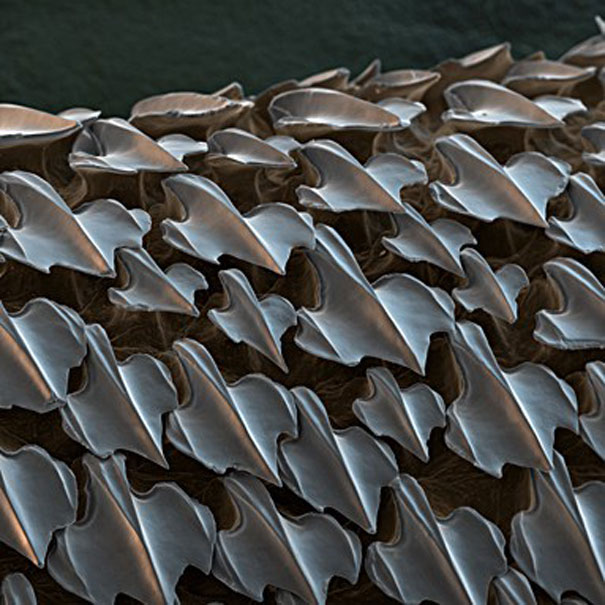
“An electron micrograph reveals sharkskin’s secret to speed:
tooth-like scales called dermal denticles. Water “races through the
microgrooves without tumbling,” says shark researcher George Burgess,
reducing friction. “It’s like a fast-moving river current versus the
gurgling turbulence of a shallow stream.” The scales also discourage
barnacles and algae from glomming on – an inspiration for synthetic
coatings that may soon be applied to Navy ship hulls to reduce such
biofouling.” . They also give the shark’s skin the feel of sandpaper.


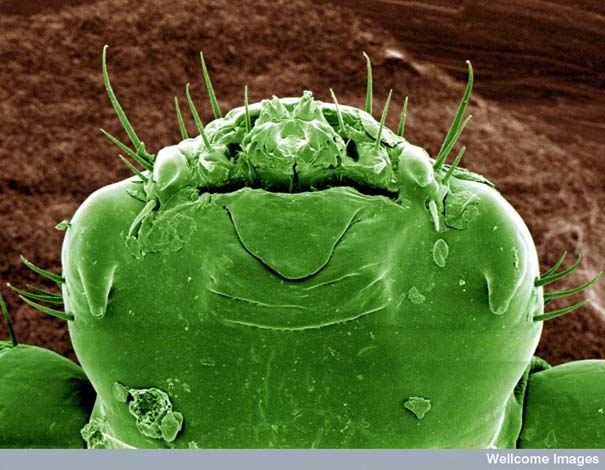
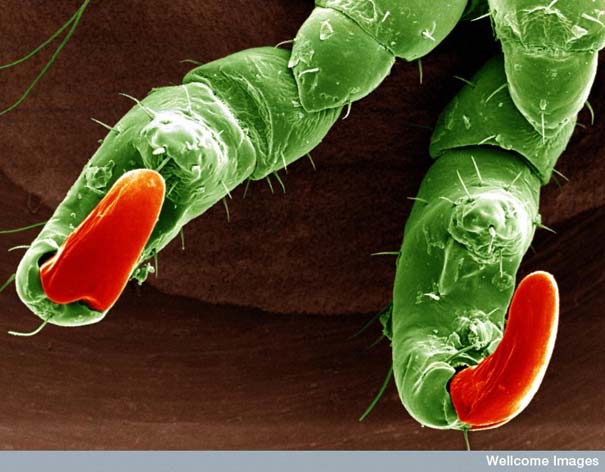



0 komentar:
Posting Komentar